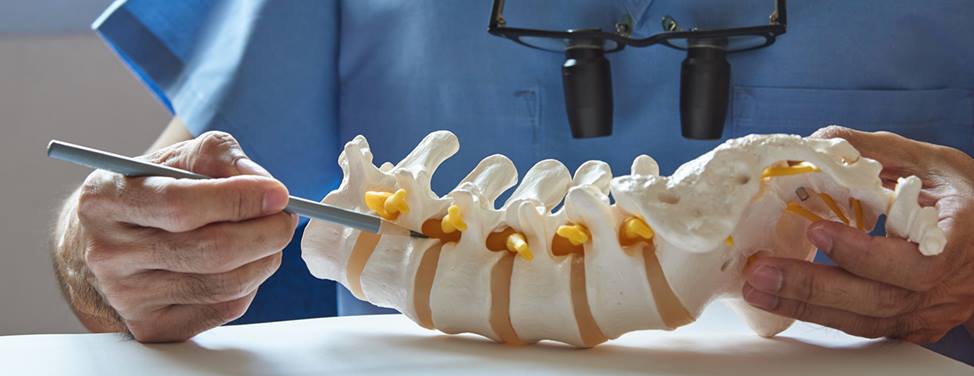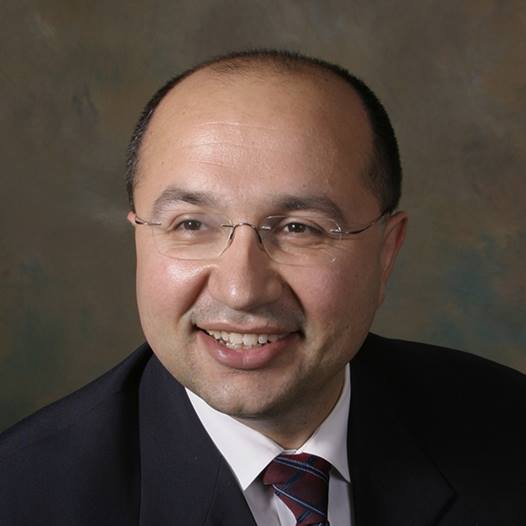Extreme lateral interbody fusion (XLIF) is a minimally invasive procedure performed through the side of the body to treat spinal disorders and reduce long-term back or leg pain that has not responded to other treatments, such as steroid injections, physical therapy and pain medication.

Extreme Lateral Interbody Fusion (XLIF)
XLIF differs from traditional procedures because the surgeon accesses the space between each spinal disc from the patient's side, rather than from the front or back, sparing major back muscles, bones and ligaments. Advantages of XLIF include:
- Less surgery time — XLIF can be completed in as little as an hour, reducing the time the patient is in surgery and under anesthesia.
- Less blood loss and scarring — Minimally invasive procedures result in less tissue disruption and reduced blood loss.
- Less pain — Because the surgeon accesses the intervertebral disc space from the patient's side, XLIF does not disrupt sensitive back muscles, bones or ligaments. Many patients are able to walk the same day after surgery.
- Shorter hospital stay — In some cases, XLIF requires only an overnight hospital stay, compared to several days of immobility and hospitalization after traditional procedures.
- Quicker return to normal activity — Patients usually walk the day of surgery, although full recovery takes a few months, compared to six months or more for traditional procedures.
Procedure
During XLIF, surgeons work in areas that are close to nerves on the spinal column. To prevent nerve damage, nerve monitoring, called electromyography or EMG, is used that provides surgeons with real-time information about nerve position relative to his or her instruments.
XLIF, which typically takes about an hour, is performed under general anesthesia so you'll be asleep during surgery. Steps of the surgery include:
- Once you are asleep, you will be positioned on your side. The surgeon will use X-ray to locate the disc to remove and will use a marker to mark your skin above the disc.
- A small incision is first made toward your back. The surgeon places his or her finger through this incision to protect the peritoneum (sac containing abdominal organs) as instruments pass through the lateral space to the spine.
- A second incision is made on your side through which the instruments will pass to remove the herniated disc.
- Special instruments, called tubular dilators, will be inserted through the muscle on the side of the vertebrae. X-rays and nerve monitoring will safely guide instruments to the appropriate location and away from nerves.
- After tubular dilators are placed, a tissue retractor is placed over them, locked to the surgical table and held open to stretch the small incisions and provide light and instrument access to the disc space.
- With the spinal disc visible, the disc is removed.
- An implant is placed into the empty disc space. The implant is filled with bone graft for fusion.
- An X-ray image ensures the implant is correctly placed. The retractor is removed and the small incisions are closed with a few stitches and a bandage.
- Depending on a patient's condition, additional support, such as screws, plates or rods, may be inserted to stabilize the spine for fusion.
Recovery
Because XLIF is less disruptive than conventional surgery, most patients can walk the evening after surgery and are discharged from the hospital the next day.
Your surgeon and health care team will determine the best course for you, depending on your comfort and other health problems you might have. Your surgeon will discuss with you any appropriate pain medications as well as a prescribed program of activities. In general, XLIF surgery results in quick recovery and return to normal activities.
Risks
Possible risks and complications include:
- Deep vein thrombosis or clotting
- Failure for the implant to fuse
- Infection
- Injury to blood vessels
- Muscle weakness
- Nerve or spinal cord damage
- Persistent pain at the site of bone graft harvest in the hip
- Pneumonia
- Progression of existing spinal disease
- Stroke
- Urinary tract infection
UCSF Health medical specialists have reviewed this information. It is for educational purposes only and is not intended to replace the advice of your doctor or other health care provider. We encourage you to discuss any questions or concerns you may have with your provider.












